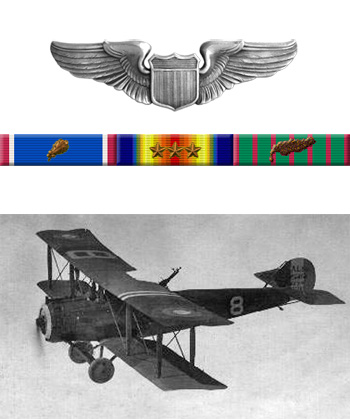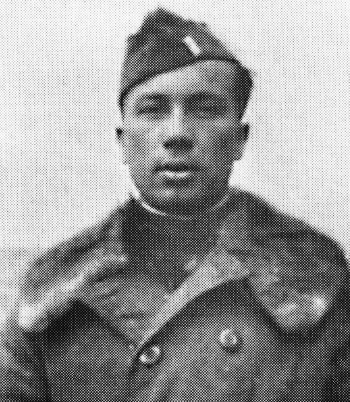Bill Erwin was born on October 18, 1895, in Ryan, Oklahoma. He enlisted in the Aviation Section of the U.S. Army Signal Corps for flight training in April 1917, and was assigned as a Salmson 2A2 pilot with the 1st Observation Squadron in France in July 1918. Lt Erwin was credited with the destruction of 8 enemy aircraft in aerial combat before the war ended in November 1918, and remained in the Army Air Service after the war. Capt Erwin and his navigator were lost in the Pacific Ocean on August 19, 1927, during the Dole Air Race from Oakland, California, to Honolulu, Hawaii, while attempting to search for two other participants of the race who had gone down in the Pacific.
His 2nd Distinguished Service Cross Citation reads:
The President of the United States of America, authorized by Act of Congress, July 9, 1918, takes pleasure in presenting a Bronze Oak Leaf Cluster in lieu of a Second Award of the Distinguished Service Cross to First Lieutenant (Air Service) William P. Erwin, United States Army Air Service, for extraordinary heroism in action while serving with 1st Aero Squadron, U.S. Army Air Service, A.E.F., near Sedan, France, 5 November 1918. Against the advice of experienced officers Lieutenant Erwin undertook a reconnaissance flight in the face of atmospheric conditions that rendered flying most dangerous. In order that his observer might gain the necessary information, he was forced to fly at a perilously low altitude, and was subject to continuous anti-aircraft and rifle fire. When information gained on the flight had been dropped at division headquarters, he circled and returned over the enemy lines, although on the first reconnaissance mission his plane had been repeatedly hit by bullets. Penetrating far into enemy territory, he maneuvered most skillfully, and with shells bursting near him, flew low while his observer poured deadly fire upon machine-gun nests that had been holding up the advance of our troops. When his machine was crippled by enemy fire, he displayed exceptional skill in effecting a landing upon rocky land within the enemy lines. With his observer, he beat off repeated enemy attacks and fought his way back to the American lines, with information of vital importance to our troops.
|



